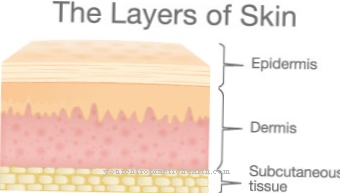A Endocarditis or Inflammation of the lining of the heart is a rare inflammatory disease of the inner lining of the heart (endocardium), which is often associated with inflammation-related changes in the valve cusps and can damage the heart valves. That is why it is also called Heart valve inflammation known. While endocarditis used to be caused by a rheumatic fever, endocarditis is now increasingly due to bacterial causes.
What is endocarditis?

© Martha Kosthorst - stock.adobe.com
Endocarditis is an inflammatory disease of the inner lining of the heart (endocardium), which can lead to inflammatory changes in the valve cusps and to heart valve defects. Depending on the underlying cause, a distinction is made between infectious or bacterial and post-infectious abacterial or rheumatic endocarditis, each of which manifests itself on the basis of different symptoms.
Infectious (bacterial) endocarditis is associated with fever, a feeling of weakness, weight loss, night sweats, anemia and occasional heart and joint problems. Fever, polyarthritis (joint pain) of the larger joints with tenderness, ring-shaped skin rashes and subcutaneous nodules (Osler nodules) as well as a general feeling of weakness are characteristic symptoms of rheumatic endocarditis.
causes
Bacterial endocarditis usually results from the colonization of the heart valves by bacterial pathogens such as Staphylococcus aureus, streptococci or enterococci. Pre-damaged heart valves are particularly at risk.
In a healthy person, bacteria circulating in the bloodstream are usually rendered harmless by the body's own immune system, while at the same time the endothelium (lining of the blood vessels) of the heart valves is resistant to these bacterial pathogens. If, on the other hand, the heart valves are damaged as a result of aortic valve stenosis, artificial heart valves, a previous endocarditis disease or congenital heart defect, the bacteria can settle on the heart valves and lead to the inflammatory reactions characteristic of endocarditis.
If there is a weakened immune system or drug addiction, fungi can cause endocarditis in addition to bacterial pathogens. Abacterial endocarditis, which is rarer in this country, is etiologically due to a dysregulation of the body's immune defense as a result of a post-infectious (after a streptococcal infection) rheumatic fever.The antibodies formed against the streptococci are directed against the body's own structures such as the endocardium, damage it and cause endocarditis.
Symptoms, ailments & signs
The symptoms of endocarditis depend on the type of disease. Doctors differentiate between acute and subacute cardiac inflammation. The extent of the disease also plays an important role.
If it is an acute bacterial endocarditis, for which staphylococci are responsible in most cases, symptoms occur that appear suddenly and take a rapid course. Around 80 to 90 percent of all sick people suffer from chills, fever and an accelerated heartbeat (tachycardia). Night sweats and feelings of cold also occur in 40 to 75 percent of all illnesses.
Approximately 25 to 50 percent of patients experience discomfort, weight loss, anemia (anemia), arthralgia, and loss of appetite. In addition, it can lead to clouding of consciousness, hemorrhages, microembolisms on the eye retina as well as headache and body aches. In addition, shortness of breath and skin changes such as minor bleeding are possible.
However, the subacute form, which takes a creeping course, is more common. The development of unspecific symptoms is typical for this variant. This can include tiredness, exhaustion, a slight rise in body temperature and a reduction in performance. The red blood pigment also decreases.
If the endocarditis persists over a long period of time, the symptoms of heart failure threaten. Furthermore, there is a risk of renewed inflammation developing on the previously damaged heart valve, which will permanently damage the heart valves.
Diagnosis & course
Although the symptoms of endocarditis are usually non-specific and resemble other febrile infectious diseases, these, in combination with heart valve noises, can be an initial indication of the presence of the disease.
The diagnosis is confirmed by the detection of the pathogen in the serum by repeated blood cultures. In addition, an increased sedimentation rate, leukocytosis (increased leukocyte count in the blood) as well as anemia and a decrease in albumins can be determined. An echocardiography (EKG) (heart ultrasound examination), in particular the so-called transesophageal echocardiography via a tube through the esophagus, enables statements to be made about changes in the heart valves.
The course and prognosis of endocarditis depend largely on the start of therapy. Endocarditis has a good prognosis if it is diagnosed and started early.
When should you go to the doctor?
Since endocarditis can be fatal, a doctor should be consulted as soon as a serious problem is suspected. This expresses itself as unusual heart murmurs, fever or a general malaise. If you are tired, exhausted, or remain weak, there are reasons for concern that need to be examined and clarified.
If you experience pain in the head, bones or joints, you should see a doctor. If the pain spreads or intensifies, a doctor is needed. Before taking a pain medication, you should consult a doctor in order to clarify any side effects in advance. Disorders of the heart rhythm, an increased pulse or a racing heart are considered unusual. They should be examined as soon as they persist for several days.
A doctor should be consulted if phenomena such as chills or sweating occur under normal temperature influences. Changes in the skin, sensitivity to touch or temperature fluctuations should be discussed with a doctor. If you notice any redness or swelling of the skin, you should inform a doctor. A drop in the normal level of performance, problems with concentration and persistent sleep disorders can lead to further complications without medical treatment. It is therefore advisable to consult a doctor if the symptoms recur over several weeks.
Doctors & therapists in your area
Treatment & Therapy
In bacterial endocarditis, high-dose antibiotics are infused intravenously, depending on the underlying pathogen, which was determined in advance using blood cultures. The aim of antibiotic therapy is the eradication (complete elimination) of the underlying pathogen, the reduction of the risk of a septic embolism and the minimization of damage to the heart valves and adjacent structures.
Intravenous antibiotic therapy lasts for several weeks (four to six weeks) and should then be continued orally if necessary. If pathogens are still detectable in the serum despite intravenous antibiotic therapy, if the fever is persistent, if heart failure is present or if a local spread of infection with abscess formation can be determined, cardiac surgery is required to repair or reconstruct the heart valves.
In addition, in the event of severe acute aortic or mitral valve insufficiency in combination with pulmonary edema or cardiogenic shock (rapid drop in the heart's pumping capacity), an operation is performed immediately and the affected heart valves repaired or replaced. The intravenous antibiotic therapy is continued for at least two weeks postoperatively.
In abacterial (rheumatic) endocarditis, penicillin (antibiotic) is usually used to eradicate the streptococcal infection and anti-inflammatory drugs such as acetylsalicylic acid or cortisone preparations are used to reduce rheumatic symptoms. If the heart valve is severely damaged, surgery (usually valve replacement) may also be necessary in the case of rheumatic endocarditis.
Outlook & forecast
Endocarditis is a potentially life-threatening condition. The course and prognosis, however, depend on various factors. Without treatment, the disease often leads to death or severe heart failure, which later often ends in fatality. Acute endocarditis can lead to complications that must be treated quickly by intensive care. These complications include embolisms, the spread of germs to other organs with abscess formation, sepsis (blood poisoning) and the destruction of the heart valves.
The embolisms can lead to strokes, pulmonary embolisms, or kidney infarctions. Other organs are damaged by the spread of the germs. In severe cases, sepsis develops, which can lead to multiple organ failure. But the chronic forms of endocarditis are also very dangerous. In the long term, it is possible that severe heart failure could develop, which could later make a heart transplant necessary.
Consequential damage can also occur with intensive treatment of endocarditis. Here, the prognosis depends, among other things, on the time of diagnosis and the start of treatment. It also plays a major role whether the endocarditis is infectious or non-infectious. Furthermore, previous heart diseases, the age of the patient and the condition of the immune system have a major influence on the further course. Other pre-existing conditions such as diabetes mellitus are also of great importance.
prevention
Endocarditis prophylaxis is particularly indicated for people with previously damaged heart valves. For this purpose, antibiotics (penicillin, clindamycin) are administered in advance of medical interventions through which bacteria can get into the blood (e.g. dental interventions, tonsil removal, lungoscopy) to prevent endocarditis.
Aftercare
With endocarditis, the person affected has only very limited options for follow-up care. First and foremost, this disease must be treated completely by a doctor, as otherwise, in the worst case, the person affected can die. The earlier the endocarditis is detected, the better the further course of this disease will usually be.
In most cases, this disease is treated with the help of drugs, and especially antibiotics. The patient must follow the doctor's instructions and ensure that they are taken regularly. It should be noted that no alcohol should be drunk during this time, as it can reduce the effect.
If the symptoms do not subside after a few days, a doctor must definitely be consulted again to prevent further damage to the heart valve. Even after successful treatment, regular examinations are useful to detect damage to the heart. During the treatment, the patient should take it easy and rest as much as possible. The heart is not to be stressed unnecessarily, so that stressful activities should be avoided.
You can do that yourself
Endocarditis is an inflammation that affects the heart and is triggered by a bacterial colonization or fungal infection. It mainly affects the inner lining of the heart and the heart valves. Patients with congenital heart and heart valve defects as well as heart diseases that have developed in the course of life are particularly at risk. However, endocarditis can affect anyone.
The symptom can be prevented through various self-help measures. Those affected should ensure thorough personal hygiene, especially in everyday work. Proper dental care is also an important part, as numerous bacteria enter the bloodstream through the mouth.
Self-help also includes a healthy, balanced, low-fat and vitamin-rich diet. To keep one's immune system fit, it is necessary to abandon bad habits such as smoking, excessive alcohol consumption, drugs and drug abuse.
If the symptom breaks out, immediate medical emergency service must be initiated if you feel unwell. Self-help should be limited to physical hygiene and prudent behavior in everyday life. Patients at risk and those affected can have a cardiac card issued. Since endocarditis is treated with antibiotics, they can be taken as an emergency preparation for when you are out and about and if you suspect an outbreak or before dental treatment. The drug is noted in the cardiac card.


.jpg)


.jpg)







.jpg)

.jpg)
.jpg)











.jpg)